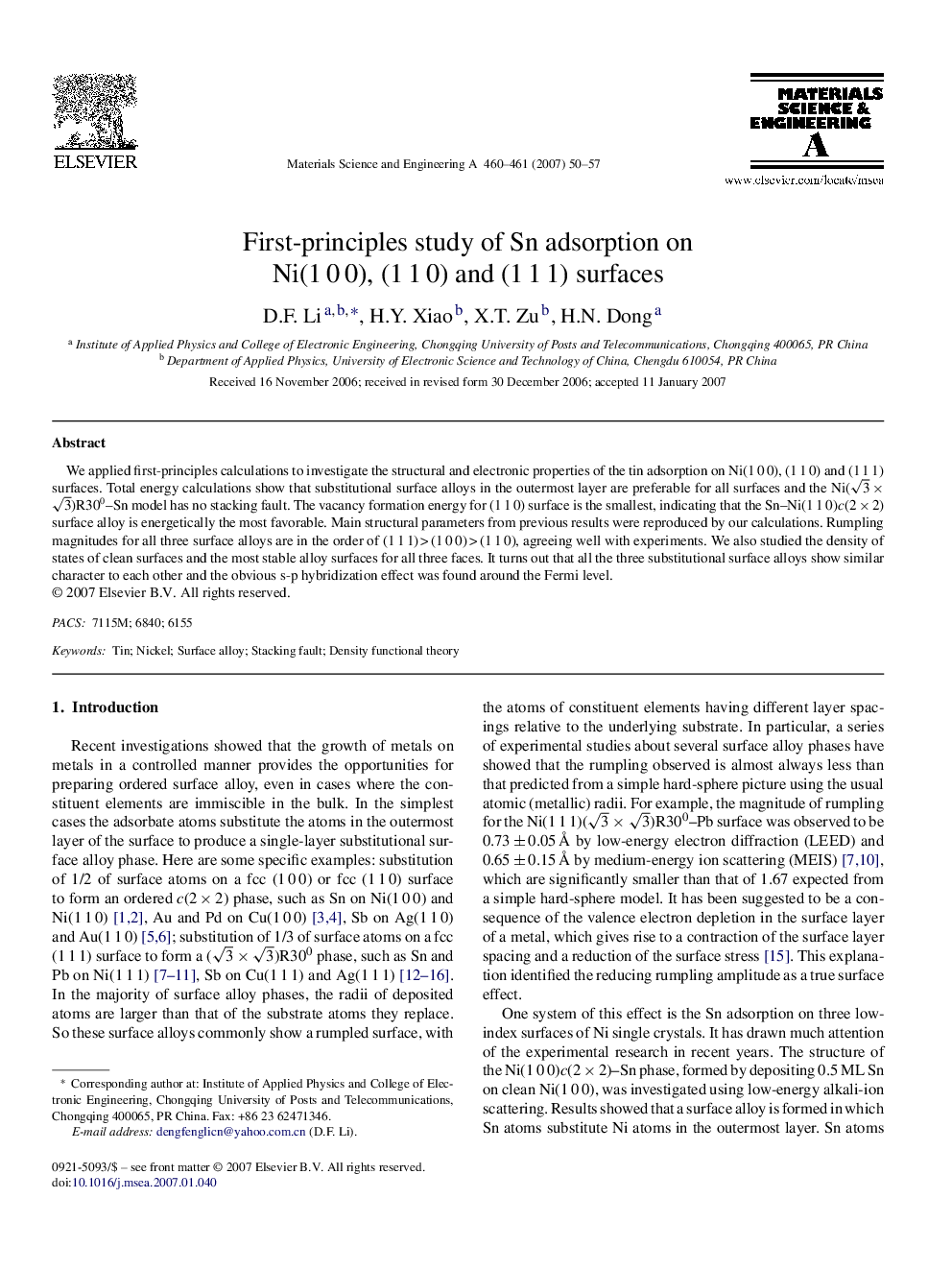| Article ID | Journal | Published Year | Pages | File Type |
|---|---|---|---|---|
| 1583543 | Materials Science and Engineering: A | 2007 | 8 Pages |
Abstract
We applied first-principles calculations to investigate the structural and electronic properties of the tin adsorption on Ni(1Â 0Â 0), (1Â 1Â 0) and (1Â 1Â 1) surfaces. Total energy calculations show that substitutional surface alloys in the outermost layer are preferable for all surfaces and the Ni(3Ã3)R300-Sn model has no stacking fault. The vacancy formation energy for (1Â 1Â 0) surface is the smallest, indicating that the Sn-Ni(1Â 1Â 0)c(2Â ÃÂ 2) surface alloy is energetically the most favorable. Main structural parameters from previous results were reproduced by our calculations. Rumpling magnitudes for all three surface alloys are in the order of (1Â 1Â 1)Â >Â (1Â 0Â 0)Â >Â (1Â 1Â 0), agreeing well with experiments. We also studied the density of states of clean surfaces and the most stable alloy surfaces for all three faces. It turns out that all the three substitutional surface alloys show similar character to each other and the obvious s-p hybridization effect was found around the Fermi level.
Related Topics
Physical Sciences and Engineering
Materials Science
Materials Science (General)
Authors
D.F. Li, H.Y. Xiao, X.T. Zu, H.N. Dong,
